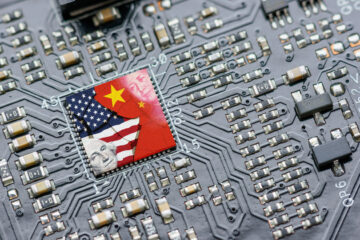
Tesla reinvents carmaking with breakthrough
Tesla is reportedly on the verge of a game-changing development in electric vehicle (EV) manufacturing. The breakthrough involves die-casting almost the entire complex underbody of an EV as a single piece, as opposed to the hundreds of components typically used in traditional car manufacturing.
Tesla’s journey began with its “gigacasting” process, using enormous presses with 6,000 to 9,000 tons of clamping pressure, which substantially reduced production costs and outpaced competitors. Now, the company is advancing toward casting the majority of an EV’s underbody as a single large frame, simplifying the manufacturing process. This development is a linchpin of Tesla’s “unboxed” manufacturing strategy, central to CEO Elon Musk’s goal of producing millions of more affordable EVs in the next decade while ensuring profitability.
To make this possible, Tesla has collaborated with experts worldwide, including in the UK, Germany, Japan, and the United States, focusing on 3D printing and industrial sand for mold creation and the incorporation of hollow subframes. This innovative approach allows for rapid and cost-effective refinement of prototypes.
The implications are significant. Tesla could potentially design and produce cars in just 18 to 24 months, a fraction of the time it takes many competitors. Moreover, this development could significantly reduce manufacturing costs, helping Tesla maintain its competitive edge in the EV market. However, critical decisions lie ahead regarding the type of gigapress and whether to prioritize productivity or quality and versatility. These choices will impact the complexity of car frames and may necessitate new, larger gigapresses and factory facilities, presenting challenges for Tesla.
Interested? Click here to read more
UK chip designer in $54.5bn market return
Arm Holdings, the UK-based chip designer, whose chip designs are used in products by tech giants like Apple, Google, Nvidia, and Samsung, raised $4.87 billion for its owner, SoftBank Group, through the sale of 95.5 million shares. Arm’s decision to list solely in the US, rather than the UK, was attributed to what the company deemed the best path forward.
The return to the stock market comes after SoftBank’s failed attempt to sell Arm to Nvidia, which faced significant regulatory challenges. Arm estimates that its chip designs are used in around 70% of the world’s population’s devices, including smartphones.
While Arm’s return to the stock market is a significant financial event, its impact on the supply chain may be less direct. However, as a key player in semiconductor chip designs, Arm’s performance and future developments could have downstream effects on the tech industry’s supply chain, particularly for the companies that rely on Arm’s technology for their products.
Read more here
Amazon unveils new supply chain services
Amazon has introduced “Supply Chain by Amazon,” a comprehensive set of supply chain services aimed at helping third-party sellers manage their supply chains across various sales channels, including those outside of Amazon. The offering simplifies and streamlines the logistics process for sellers, enabling Amazon to handle aspects from manufacturers to customers, reducing the need for sellers to coordinate with multiple companies in the supply chain.
Key components of Supply Chain by Amazon are: Amazon Global Logistics, Amazon Warehousing and Distribution, Multi-Channel Distribution, Automatic Inventory Replenishment. Sellers can choose from these services individually or opt for the complete offering, with pricing based on factors like the products being shipped and distribution channels. Amazon aims to simplify the complexities of supply chain logistics for sellers, helping them automate and streamline their operations.
The impact on the supply chain will likely benefit third-party sellers by offering them an efficient and integrated solution to manage their supply chain needs. By leveraging Amazon’s infrastructure and expertise, sellers can potentially enhance their operational efficiency and meet customer demand more effectively across various sales channels.
Click here to read more
- SEO Powered Content & PR Distribution. Get Amplified Today.
- PlatoData.Network Vertical Generative Ai. Empower Yourself. Access Here.
- PlatoAiStream. Web3 Intelligence. Knowledge Amplified. Access Here.
- PlatoESG. Automotive / EVs, Carbon, CleanTech, Energy, Environment, Solar, Waste Management. Access Here.
- PlatoHealth. Biotech and Clinical Trials Intelligence. Access Here.
- ChartPrime. Elevate your Trading Game with ChartPrime. Access Here.
- BlockOffsets. Modernizing Environmental Offset Ownership. Access Here.
- Source: https://www.allthingssupplychain.com/supply-chain-weekly-wrap-up-09-08-2023-09-14-2023/?utm_source=rss&utm_medium=rss&utm_campaign=supply-chain-weekly-wrap-up-09-08-2023-09-14-2023
- :has
- :is
- 000
- 24
- 3d
- 3D Printing
- 87
- 9
- a
- across
- advancing
- affordable
- After
- ahead
- aimed
- aims
- allows
- almost
- Amazon
- an
- and
- Apple
- approach
- ARE
- ARM
- around
- AS
- aspects
- At
- automate
- Automatic
- based
- bbc
- BE
- began
- being
- benefit
- BEST
- Billion
- breakthrough
- by
- CAN
- car
- cars
- casting
- central
- ceo
- chain
- chains
- challenges
- channels
- chip
- choices
- Choose
- click
- collaborated
- comes
- Companies
- company
- competitive
- competitors
- complete
- complex
- complexities
- complexity
- components
- comprehensive
- coordinate
- cost-effective
- Costs
- could
- creation
- critical
- customer
- Customers
- decade
- decision
- decisions
- deemed
- Demand
- Design
- Designer
- designs
- Development
- developments
- Devices
- direct
- distribution
- Edge
- effectively
- effects
- efficiency
- efficient
- Electric
- electric vehicle
- Elon
- Elon Musk’s
- enabling
- enhance
- enormous
- ensuring
- Entire
- estimates
- EV
- Event
- evs
- expertise
- experts
- faced
- facilities
- factors
- factory
- Failed
- financial
- focusing
- For
- Forward
- fraction
- FRAME
- from
- future
- future developments
- Germany
- giants
- Global
- goal
- Group
- handle
- Have
- helping
- Holdings
- However
- HTTPS
- Hundreds
- Impact
- implications
- in
- Including
- Individually
- industrial
- industry’s
- Infrastructure
- innovative
- integrated
- introduced
- inventory
- involves
- IT
- ITS
- Japan
- journey
- jpg
- just
- Key
- large
- larger
- less
- leveraging
- lie
- like
- likely
- List
- logistics
- maintain
- Majority
- make
- manage
- Manufacturers
- manufacturing
- many
- Market
- May..
- Meet
- million
- millions
- months
- more
- Moreover
- multiple
- Need
- needs
- New
- next
- now
- Nvidia
- of
- offering
- on
- operational
- Operations
- opposed
- or
- outside
- owner
- particularly
- path
- performance
- piece
- plato
- Plato Data Intelligence
- PlatoData
- player
- possible
- potentially
- pressure
- pricing
- printing
- Prioritize
- process
- produce
- producing
- Production
- productivity
- Products
- profitability
- prototypes
- quality
- raised
- rapid
- rather
- Read
- reduce
- Reduced
- reducing
- regarding
- regulatory
- rely
- return
- Reuters
- sale
- sales
- Samsung
- SAND
- sell
- Sellers
- semiconductor
- semiconductor chip
- Services
- set
- Shares
- shipped
- significant
- significantly
- simplify
- simplifying
- single
- smartphones
- SOFTBANK
- solely
- solution
- States
- stock
- stock market
- Strategy
- streamline
- substantially
- supply
- supply chain
- Supply chains
- takes
- tech
- tech giants
- Technology
- Tesla
- than
- that
- The
- the UK
- their
- Them
- These
- third-party
- this
- those
- Through
- time
- to
- tons
- toward
- traditional
- type
- typically
- Uk
- United
- United States
- Unveils
- us
- used
- using
- various
- vehicle
- verge
- versatility
- Warehousing
- was
- weekly
- What
- whether
- which
- while
- whose
- will
- with
- world’s
- worldwide
- zephyrnet












